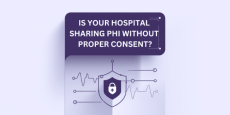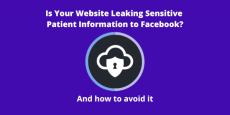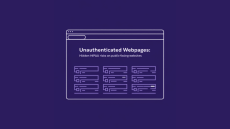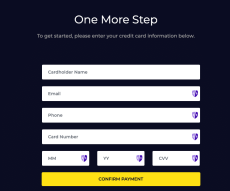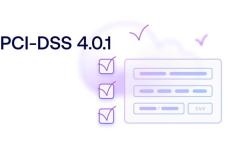|
By Feroot
Recent lawsuits have revealed a critical privacy concern for healthcare providers – the sharing of patient data with Facebook through tracking pixels. We wrote this article to help your security and privacy teams assess their risk, identify key stakeholders, and understand the urgency of this issue.
|
By Feroot
Picture this scenario: You’ve used every tool you have to secure your web pages and forms so patient information is safe. One day, a potential patient Googles “hysterectomy options” and ends up on your hospital’s website. They browse around, maybe even schedule an appointment online. You have no reason to worry, right? Because you’ve done what you could to secure those pages.
|
By Feroot
Websites have become indispensable tools for healthcare organizations to connect with patients, streamline operations, and enhance service delivery. Modern websites are composed of components that “build” unique user experiences in real time.However, the use of tracking technologies on these websites presents unique challenges in complying with the Health Insurance Portability and Accountability Act of 1996 (HIPAA).
|
By Feroot
When we think about HIPAA compliance and websites, the focus often shifts to patient portals, online scheduling systems, and other secure areas requiring user authentication. However, it’s crucial to recognize that even unauthenticated webpages, those accessible to the public without logging in, can present hidden HIPAA risks. Let’s explore these often-overlooked vulnerabilities and discuss how covered entities can mitigate potential compliance pitfalls.
|
By Feroot
Today, healthcare providers, insurers, and other HIPAA-covered entities are increasingly relying on websites to share information, engage with patients, and streamline operations. While websites offer numerous benefits, it’s crucial to understand the implications of online tracking technologies for the privacy and security of protected health information (PHI).
|
By Feroot
Being PCI DSS 4 compliant is crucial for e-commerce merchants—businesses that accept credit card payments on their websites and web applications. The new PCI DSS requirements (6.4.3 and 11.6.1) are designed to strengthen payment page security, and if you’re processing online payments, you’re likely required to comply. Compliance helps protect your customers’ sensitive payment information while ensuring the integrity and security of your payment process.
|
By Feroot
If you’re running a business that takes online credit card payments, you know that you’ve got to become compliant with PCI DSS Requirements 6.4.3 and 11.6.1. Meeting these requirements is crucial for PCI DSS Version 4 Compliance and helps prevent costly data breaches. However, the costs of compliance tools can add up quickly, especially for small businesses. In particular, PCI DSS requirements 6.4.3 and 11.6.1 can seem daunting.
|
By Feroot
Healthcare organizations today face an imminent threat to securing private health information (PHI) on their websites. For this reason, HHS has released requirements to help organizations and patients stay protected. Non-compliance can result in HIPAA violations leading to costly lawsuits. Most healthcare companies use tracking technologies for marketing and analytics. Sometimes these trackers, cookies, and pixels collect and share more health information than is necessary, leading to privacy breaches.
|
By Feroot
In part one of our series on PCI DSS 4.0, we covered the updates in the latest version 4.0.1 and how to operationalize those changes. In this blog we are going to dig deeper into Requirement 11.6, how to interpret the nuance and automate the current guidance. Guidance that will become a mandate in March, 2025. Let’s start with what Requirement 11.6 is and why it’s so important.
|
By Feroot
As the Payment Card Industry Data Security Standard (PCI DSS) compliance standards continue to evolve, our team has been fielding a number of questions about the changes to 4.0, how to interpret them and ultimately how to get or remain compliant. We decided to create a blog series covering some of these recent changes with practical, actionable tips for getting started. Many organizations subject to PCI-DSS may not be aware that the latest version, PCI 4.0.1 has been released.
|
By Feroot
Feroot Security Inspector automatically discovers and reports on all JavaScript web assets and their data access. Inspector finds JavaScript security vulnerabilities on the client-side and reports on them, and provides specific client-side threat remediation advice to security teams in real-time. With Inspector, customers are able to conduct constant client-side attack surface management and defense.
|
By Feroot
Feroot Security co-founders, Ivan Tsarynny and Vitaliy Lim, discuss the client-side landscape and why security is needed to protect the front-end.
|
By Feroot
Head of Application Security at The Motley Fool, Paolo del Mundo, shares his experience with Feroot's Inspector and how it has increased visibility into their client-side attack surface.
|
By Feroot
Client-side security is important today because of the increase in attacks against individuals using the web to access services that require the sharing of sensitive and personally identifiable information (PII). Feroot enables proactive client-side security programs to protect the customer journey. Our products are designed to significantly diminish a threat actor’s ability to breach customer data or damage websites via client-side attacks. We help cybersecurity and application security professionals guard the customer experience.
|
By Feroot
Empower your business with client-side security. Arm your application developers, security professionals, and privacy professionals with reliable client-side security technologies to develop secure JavaScript applications, stop client-side cyberattacks, and ensure compliance with global privacy regulations. Learn more about Feroot Security and what we can do to help you secure your client-side attack surface!
|
By Feroot
See Feroot Security Inspector in action. Learn how you can deploy client-side JavaScript security monitoring to detect Magecart, e-skimming, formjacking, JavaScript vulnerabilities, and other threats to your customer-facing web applications.
|
By Feroot
Learn how to protect your client-side web applications and the customer data you collect via your websites. Gain a deep understanding of how to stop skimming breaches by closing gaps in your web application firewalls, content security policies, penetration testing, security testing, and vulnerability scanning coverage. Explore the basics of client-side security and learn how businesses can protect themselves and their customers with automated tools, monitoring, and controls to stop threats, all while safeguarding customer data.
|
By Feroot
In a world in which commerce, business, and information are driven almost exclusively by the internet, protecting both consumers and data is critical.
|
By Feroot
Learn how client-side web security programs use Feroot Security to align with cybersecurity frameworks.
|
By Feroot
Learn everything you need to know about client-side security to protect JavaScript web applications and customer data. Discover how to secure your business so that it may succeed in today's digital economy.
|
By Feroot
Learn how to protect your JavaScript web applications and customer data from cyberthreats. Discover how to secure your webpages and web applications so that your business can thrive. The guide highlights the fundamental risks associated with using JavaScript in an unprotected client-side environment and what web application developers and security professionals can do to better protect their websites and website users.
- December 2024 (5)
- November 2024 (2)
- October 2024 (1)
- August 2024 (2)
- May 2024 (2)
- March 2024 (1)
- October 2023 (2)
- May 2023 (1)
- April 2023 (5)
- March 2023 (1)
- February 2023 (2)
- January 2023 (1)
- August 2022 (6)
- July 2022 (1)
- June 2022 (6)
- May 2022 (4)
- April 2022 (4)
- March 2022 (9)
- February 2022 (4)
- January 2022 (5)
- December 2021 (1)
- November 2021 (1)
- October 2021 (2)
- September 2021 (2)
- July 2021 (1)
- June 2021 (1)
Secure your JavaScript web applications and webpages with automated security scanning, monitoring, and controls to stop cyber threats and protect customer data.
Arm your application developers, security professionals, and privacy professionals with reliable client-side security technologies to develop secure JavaScript applications, stop client-side cyberattacks, and ensure compliance with global privacy regulations.
Empower your business with client-side security:
- Know your client-side attack surface: Create an inventory of client-side elements and gain a deep understanding of how scripts and applications behave and the data they can access.
- Uncover suspicious behavior: Discover and control client-side web assets. Monitor web application behavior to determine if baseline scripts or applications show runtime or access abnormalities.
- Act on privacy & compliance reports: Gain deep transparency of your client-side asset inventory, tracking, and remediation status’. Track PCI DSS, NIST, CIS Top 20, OWASP Top 10, and MITRE ATT&CK program maturity.
Client-Side Security Made Easy.


